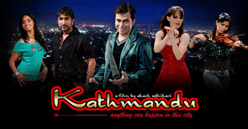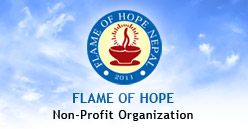Nepal In Brief

Overview
Nepal is a mountainous country in South Asia. With a population of nearly 30 million and an area of 147,181 Sq. Km., Nepal ranks 93rd in landmass and 42nd in population size among the countries of the world. Nepal shares it’s Southern, Eastern and Western border with India and northern border with China. This landlocked country is one of the most recent countries in the world to be a republic.
Geography
Nepal is a narrow strip of elongated territory between India and China. The country is roughly 900Km long on the east-west stretch and is nearly 200km long in the north-south direction. Almost all of the northern part of the country is covered by the great Himalayas. In the uncommonly diverse geography of Nepal, the highest point is Mt Everest (8848m), which is also the world’s highest peak, and the lowest point is Kechana, which is only 60m above the sea level. Nepal is ecologically divided into Mountains, Hills and the Terai region. These ecological belts run east- west and are vertically intersected by Nepal’s major north-to-south flowing river systems.
Province
Nepal is divided into 14 administrative zones, which are sub-divided into 75 districts. The 14 administrative zones are grouped into five development regions. Each district is headed by a Chief District Officer (CDO) who is responsible for maintaining law and order and coordinating the work of field agencies of the various government ministries.
Government and Administration
Nepal is a Federal Democratic Republic in which the President is the Head of State and the Prime Minister is the Head of Government. The President exercises his legislative power through the Council of Ministers and his judicial power through the Courts of Law. The government is centralized in Kathmandu, the nation’s capital. For administrative purposes, the country is divided into five development regions that are further sub-divided into 14 zones and 75 districts.
Kathmandu: The Capital City
Kathmandu Valley, the capital, is the political, commercial as well as cultural hub of Nepal. Spread across an area of 360 square kilometers and at an altitude of 1336 meters above the sea level, Kathmandu is an exotic and fascinating showcase of a very rich culture, art and tradition. It is surrounded by hills – Fulchowki, Chandragiri, Shivapuri and Nagarjun, and the landscape is dotted by compact clusters of red tile-roofed houses.
Population
Nepal’s population is estimated to be approximately 30 million of which about 3 million live in Kathmandu.
Religion
All major faiths are welcomed equally. Nepal was declared as a secular state on May 2006. Hinduism is the major religion in Nepal followed by Buddhism, Islam, Christianity and other religions.
Weights and Measures
A uniform metric system is used throughout Nepal. Numerals on vehicle, speedometers, highway markers and speed limits all indicate kilometers.
Time-zone
Nepal is five hours and forty five minutes (+5:45) ahead of the Greenwich Mean Time (GMT).
Electricity
The standard voltage is 220 volts. Therefore, appropriate transformers must used for 110 volts equipment.
Airports in Nepal
Nepal has many domestic airports all over the country, but there is only one international airport, Tribhuvan International Airport (TIA), which is in Kathmandu.
National Public Holidays
Nepal’s national public holidays are linked to numerous religious traditions, and follow the Nepali calendar which is in lunar pattern. Therefore most of the dates of the public holidays change every year. The major holidays of Nepal are listed below.
- Dashain: September/October
- Haritalika (Teej): September (Female Employees)
- Rishipanchami: September (Female Employees)
- Kumari Indrajatra: September (Kathmandu Valley)
- Ghatasthapana: September/October (Government Offices)
- Civil Service Day (Nijamati Sewa): September (Bhadra 22)
- Gaijatra: August (Kathmandu Valley)
- Krishna Janmashtami: September 14
- Buddha Jayanti: May Republic (Ganatantra) Day : May
- Raksha Bandhan/Janai Purnima: August
- Ghodejatra: April (Kathmandu Valley)
- Nepali New Year: April (Baisakh 1)
- Loktantra Diwas: April (Baisakh 11)
- International Labor Day/May Day: May 1
- Gyalbo Lhosar: March
- Mahashivratri: March
- International Women’s Day: March
- Falgun Purnima (Holi): March
- Ramnawami: March/April
- Shreepanchami/Saraswati Puja: February (Education Institution)
- Prajatantra Diwas (Democracy Day): February (Falgun 7)
- Maghiparwa/Makar Snan Mela: January (Magh 1)
- Shahid Diwas (Martyrs’ Day): January (Magh 16)
- Sonam Lhosar: February

.jpg)

.jpg)




.jpg)
.jpg)
.jpg)




